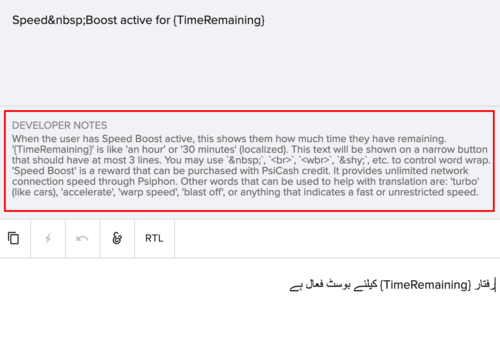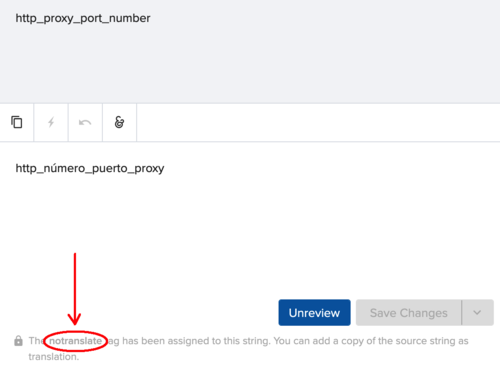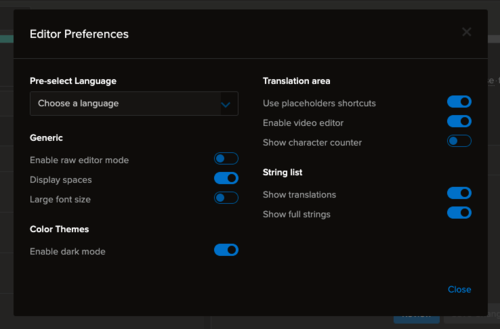Translation and Review Guidelines: Difference between revisions
Jump to navigation
Jump to search
(Added Display Spaces info.) |
|||
| Line 106: | Line 106: | ||
{|class="wikitable" style="margin-right: auto; margin-left: 0px; width: Auto; background-color:#ffcccc;" | {|class="wikitable" style="margin-right: auto; margin-left: 0px; width: Auto; background-color:#ffcccc;" | ||
| | | | ||
===Punctuation, capitalization, double spaces and typos matter | ===Punctuation, capitalization, double spaces and typos matter=== | ||
The small details make a big difference in the end product. Individuals are less likely to trust a tool whose interface is messy or has inconsistent punctuation and capitalization, even if the translation itself is correct. | The small details make a big difference in the end product. Individuals are less likely to trust a tool whose interface is messy or has inconsistent punctuation and capitalization, even if the translation itself is correct. | ||
| Line 113: | Line 113: | ||
:*Use correct and consistent capitalization. If there are individual terms that are capitalized in the English source, they are most likely capitalized for a reason. Double check to see if you should also capitalize in the target language translation; | :*Use correct and consistent capitalization. If there are individual terms that are capitalized in the English source, they are most likely capitalized for a reason. Double check to see if you should also capitalize in the target language translation; | ||
:*Add the correct number of brackets, parentheses and curly brackets in your translation; and | :*Add the correct number of brackets, parentheses and curly brackets in your translation; and | ||
:*Do not add double spaces unless they are present in the original source content. You can turn on "Display Spaces" in your Transifex Editor Settings which will help you visualize spaces in the source text and your translation. | :*Do not add double spaces unless they are present in the original source content. You can turn on "Display Spaces" in your [https://docs.transifex.com/translation/translating-with-the-web-editor#editor-settings Transifex Editor Settings] which will help you visualize spaces in the source text and your translation. | ||
::[[File:Display_Spaces.png|500px|center|Display Spaces Transifex]] | ::[[File:Display_Spaces.png|500px|center|Display Spaces Transifex]] | ||
|} | |} | ||
Revision as of 14:00, 12 February 2021
Please review the tips and guidelines below prior to localizing projects. The following information will help you navigate the Transifex interface and more effectively and accurately translate and review projects.
Do not Machine Translate
|
Communicate
|
Do not translate or transliterate application or project names.
|
Focus on consistencyIn addition to recurring terminology, you will often encounter strings that are duplicate or directly reference other strings. It is important to ensure these translations are consistent across the entirety of a project.

|
Watch out for placeholders, HTML and Unicode character entities, and markup language.Placeholders and variables

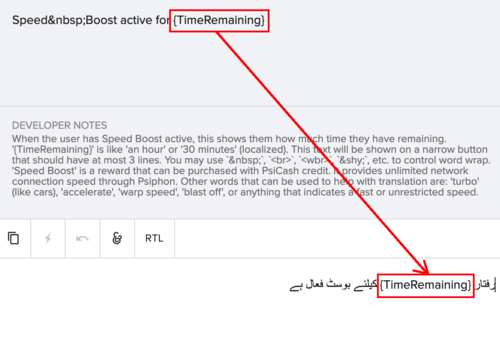

  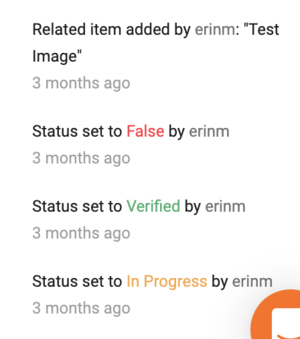
HTML and Unicode character entities & mark down language
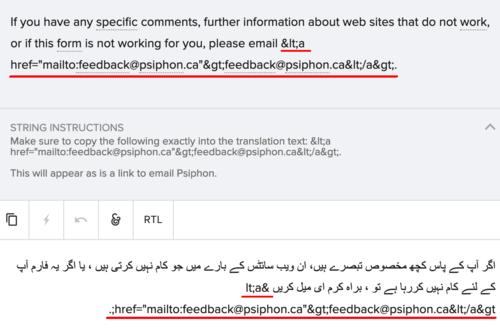 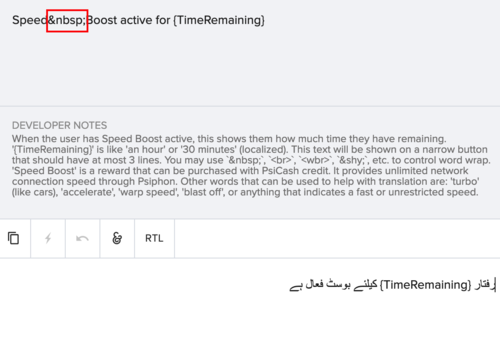 New lines
|
Punctuation, capitalization, double spaces and typos matterThe small details make a big difference in the end product. Individuals are less likely to trust a tool whose interface is messy or has inconsistent punctuation and capitalization, even if the translation itself is correct.
|
